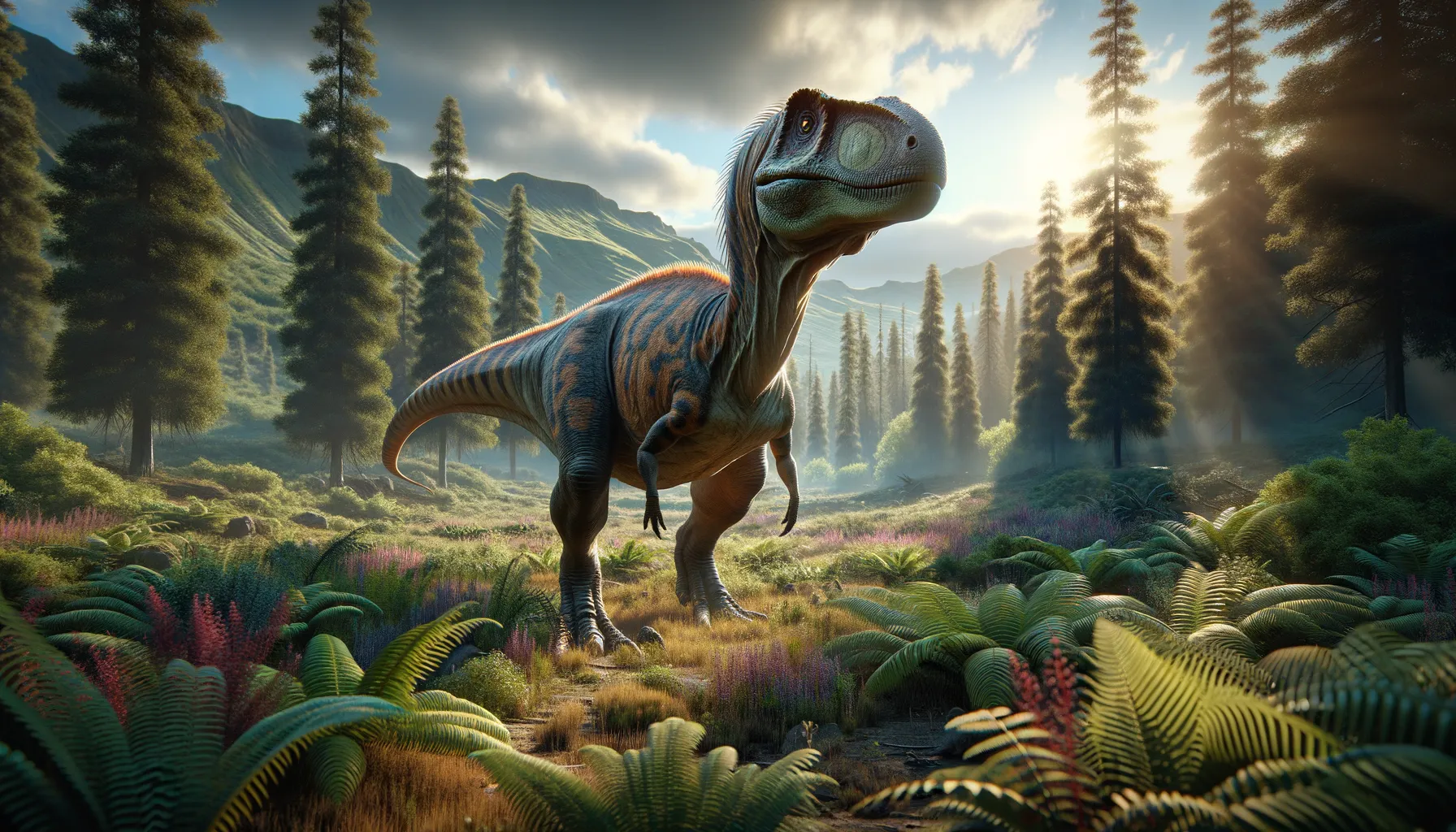
Planicoxa
Graceful grazer of the Cretaceous landscapes.
Period
Cretaceous
Length
About 18 to 20 feet long.
Height
Approximately 3 to 4 feet at hips.
Weight
Around 1 to 2 tons.
Planicoxa was a herbivorous dinosaur that roamed the earth during the Cretaceous period. Known for its flat hip bones, Planicoxa was a member of the Iguanodontian group, characterized by its herbivorous diet and bipedal posture. It primarily inhabited areas that are today part of Europe, following a lifestyle that involved grazing on low-lying vegetation and coexisting with other herbivores and predators. Fossil evidence of Planicoxa helps paint a picture of a peaceful plant-eating dinosaur.
Diet
Planicoxa had a diet consisting mainly of plants. It likely fed on a variety of low-growing foliage, using its beak and teeth to clip leaves and stems. Its digestive system was adapted to process fibrous plant material.
Hunting
Being a herbivore, Planicoxa did not hunt. Instead, it may have been prey for carnivorous dinosaurs of its time. Its primary defense against predators would have been relying on alertness and possibly traveling in groups.
Environmental challenges
Planicoxa faced numerous environmental challenges, including avoiding predators like theropods. Its habitat would have experienced occasional climate changes, affecting vegetation growth. Adaptations in its feeding strategy helped it to cope with varying food availability. Additionally, competition with other herbivores for resources was likely common.
Speed
Moderate, adept at walking without haste.
Lifespan
Estimated at around 20 to 30 years.
First discovery
Found in England, first described in 2001.
Fun Facts
- Planicoxa was a plant-eating dinosaur that roamed the earth during the Cretaceous period.
- This dinosaur is known for its unique hip structure, which gave it a distinctive appearance.
- Fossils of Planicoxa have been primarily discovered in North America, particularly in Utah.
- Planicoxa is believed to be a part of the iguanodont family, characterized by their beaked mouths and ability to chew plants effectively.
- Despite having a bulky body, Planicoxa could walk both on two legs and all fours, an advantage in foraging for food.
- The name 'Planicoxa' refers to the flat nature of its hip bones, a rare feature among its dinosaur relatives.
- Planicoxa lived over 100 million years ago, sharing its environment with various other dinosaurs and ancient creatures.
Growth and Development
Planicoxa grew steadily from a hatchling to adulthood, with bones indicating a relatively rapid growth phase in early life. Reaching full size took several years, after which growth continued more slowly. The development of its beak and specialized teeth played a critical role in its ability to process a herbivorous diet.
Habitat
It inhabited the floodplains and forested regions of what is now Europe. This provided ample vegetation for grazing and cover from larger predators. The environment was relatively warm, with periodic wet and dry seasons altering the landscape substantially.
Interaction with other species
Planicoxa shared its environment with various plant-eating and meat-eating dinosaurs. It likely coexisted peacefully with other herbivores. Predators posed occasional threats, necessitating cautious behavior. Social interactions might have included cooperative feeding and perhaps protective herding against common threats.
Natural lifespan
Planicoxa lived for about 20 to 30 years in natural conditions.
Reproduction
Planicoxa reproduced by laying eggs, possibly in nests situated in safe, hidden areas. Parental care is not well documented but might have involved guarding the nest. Hatchlings were likely vulnerable, relying on rapid growth and possibly the protection of adults.
Social behaviour
Planicoxa might have exhibited herd behavior, sticking together for protection. Social structures could have been loose, with individuals coming together mainly for feeding and migrating. Communication may have included visual and vocal signals to maintain group cohesion.
Fossil locations
Planicoxa fossils have been discovered primarily in Europe, specifically in England. These findings offer significant insight into the dinosaur's distribution and paleoecology. Fossils include partial skeletons, helping to reconstruct aspects of its anatomy and behavior.
